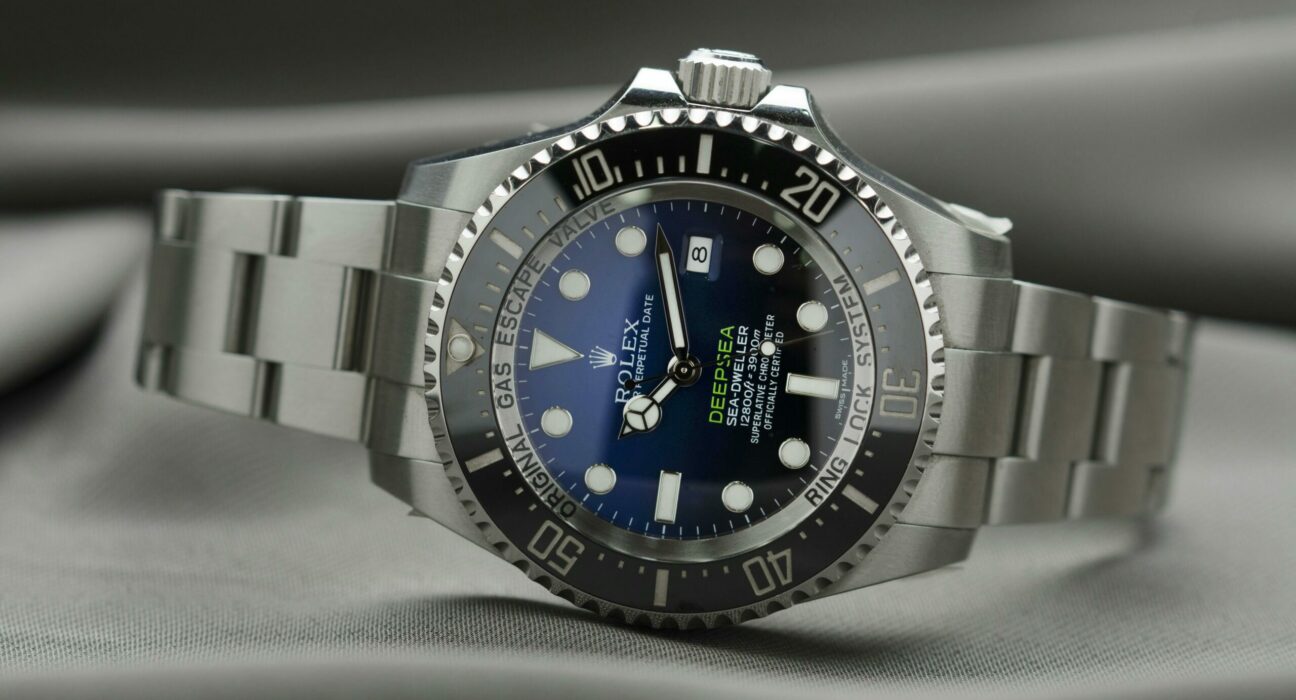The Allure and Challenge of Watch Investing Today
Luxury watches have long been admired as mechanical art, but they also came to be seen as an alternative asset class in recent years. The allure is clear: top-tier watches can hold or even increase in value over time, all while being enjoyable to wear. Brands like Rolex, Patek Philippe, and Audemars Piguet have reputations for quality and limited production, which fuels demand among collectors. For example, certain Rolex sports models historically sold for more second-hand than at retail, implying a built-in profit for anyone lucky enough to buy at list price. This phenomenon created a rush of new entrants hoping to make easy money.
However, investing in watches today is not as simple as it might sound. For one, buying the hottest models at retail from an authorized dealer (AD) is extremely difficult for newcomers. Popular pieces – think Rolex Submariners, Daytonas, or Patek Nautiluses – often have years-long waitlists and are allocated to VIP clients first. Many beginners discover that walking into a boutique to buy a steel Rolex at MSRP is nearly impossible without an established relationship. The alternative is the secondary (gray) market, where those same models are available immediately but at a hefty premium over retail. That means a novice investor has to pay above list price upfront, betting that the watch’s value will continue to rise. In the boom times, that bet often paid off; in today’s climate, it’s far less certain.
Another challenge is the specialized knowledge required. The watch market has nuances – from understanding reference numbers and model variations to spotting fakes or knowing which limited editions are truly sought-after. Common practices among seasoned watch investors include:
- Building relationships with ADs: Many try to become regular customers (purchasing less popular models or jewelry) to eventually get access to high-demand pieces at retail. This requires time, capital, and no guarantee of success.
- Tracking market prices: Successful flippers constantly monitor platforms like Chrono24, WatchCharts, or auction results to gauge trends. They know, for instance, how a discontinued model’s price might surge or how seasonality and global events affect demand.
- Buying to hold long-term: Some treat watches like a long-term investment, focusing on models with historical significance or limited production. This might mean holding a watch for years to hopefully see substantial appreciation, as opposed to quick flipping.
- Maintaining watch condition and provenance: Serious investors keep original boxes, papers, and service records, since resale value is highest for complete sets in excellent condition. A scratched up watch without papers will fetch less, so protecting the asset is part of the practice.
Today’s market conditions make these practices both more important and less reliably profitable. Investing in watches is no longer the “easy win” it appeared to be during the peak hype. As one industry writer put it, after the explosive price growth of 2020–2022, the upper end of the watch market is now experiencing a correction and “reality check”. The days of runaway prices have ended for now, and beginner investors face a more challenging landscape. Watches can still appreciate, but picking the right model at the right price takes caution and patience.
On the positive side, this cooling-off has also tempered the rampant speculation, potentially making the hobby more approachable for true enthusiasts. With less frenzy, a beginner might have a better chance to buy a desired watch at a reasonable price without engaging in bidding wars or paying triple retail. In the next sections, we’ll dive into why the market reversed course and what that means for would-be watch investors.
From Boom to Bust: Why the Luxury Watch Market Crashed
Not long ago, headlines were touting the surging values of Rolex and Patek Philippe watches as if they were as good as gold. So, what caused the luxury watch market to crash after its pandemic-era boom? In reality, it was a classic case of an overheated market meeting cold economic headwinds – with a bit of speculative bubble bursting as well. Here are the key factors that drove the correction:
- Global Economic Downturn and Inflation: By early 2022, inflation was rising sharply around the world and economic growth was slowing. Central banks hiked interest rates to combat inflation, which cooled off excess liquidity in the market. Luxury watches, though often insulated from short-term swings, are not immune to macroeconomics. As one analysis noted, slowing economic growth and higher interest rates starting in 2022 put pressure on the high-flying prices of luxury timepieces. Simply put, with stock markets volatile and easy money drying up, fewer people were willing or able to pay astronomical prices for watches.
- Geopolitical and Market Uncertainty: The outbreak of war in Ukraine in early 2022 added further uncertainty and dampened consumer confidence globally. This contributed to a pullback in many asset classes, watches included. When people feel unsure about the world economy, they are less likely to spend $100,000 on a collectible watch, especially if they suspect the price might not hold.
- Speculative Bubble Burst: The price explosion in 2020–2021 had all the hallmarks of a speculative bubble. Certain models became must-have assets for flippers and status-seekers, leading to absurd premiums. For example, Patek Philippe’s famed Nautilus 5711 (discontinued in 2021) saw average prices peak around €220,000 in February 2022, roughly 7.5 times its retail price. This level was clearly unsustainable – even Patek’s president remarked that the hype was “out of control.” When such an extreme valuation finally caused buyer fatigue, prices had only one way to go: down. By 2023, the unworn Nautilus 5711 was averaging around €130,000 (still ~4.5× retail, but far below its peak), and many other hyped models saw similar corrections.
- Market Saturation and Increased Supply: As prices reached records, more owners decided it was a great time to cash in. This meant a surge of supply in the secondary market. Dealers and platforms suddenly had far more Rolexes and Pateks available than before – at the same time that demand from end-buyers was cooling. This oversupply relative to demand put downward pressure on prices. Essentially, the market became saturated with would-be sellers (speculators looking to take profit or cut losses) but not enough buyers at those high price points. The result was a classic market correction as listings lingered and prices were cut to entice buyers.
Cryptocurrency Wealth Effect Reversal: A notable aspect of the 2020–2021 watch boom was that it coincided with a cryptocurrency boom. Many new rich crypto investors were plowing their gains into luxury goods, including watches. Past trends show that a strong crypto market can significantly boost demand for luxury watches. Conversely, when crypto crashed in 2022 (Bitcoin and others fell dramatically from late 2021 highs), it likely hurt the watch market. The sudden loss of paper wealth for many young investors meant fewer exuberant purchases of Rolex Daytonas and AP Royal Oaks. (Interestingly, by late 2024, crypto was rebounding, and Chrono24 observed that the crypto boom was again fueling watch demand in the short term, illustrating how tightly the two speculative arenas can be linked.)
All these factors culminated around spring 2022. Indeed, insiders pinpoint April 2022 as the peak of the hype. According to Chrono24’s data, the huge spike in prices for popular watches lasted until April 2022, then in May 2022 prices started dropping significantly for many of the most sought-after models. It was as if the bubble popped overnight. One month you had Rolex, Patek, and AP trading for 2–3× their retail prices; the next month values began sliding off those highs. Importantly, this “crash” was relative – prices fell from incredibly elevated levels. As observers noted, what we saw initially was more of a market correction than a total collapse. Prices in mid-2022 were coming down from two or three times retail to perhaps only 1.5–2× retail. Some optimists thought this was a healthy normalization, while pessimists feared a bigger freefall to come.
The correction did deepen through late 2022 and into 2023. By the end of 2022, secondary market valuations for certain marquee models were down significantly from their peak. For instance, the stainless steel Rolex Daytona 116500LN (black ceramic bezel model) became something of a poster child for the downturn – it fell approximately 25% in value from its peak in March 2022. But tellingly, even after losing a quarter of its peak value, that Daytona still traded for more than double its official retail price (which was around $14,550). This highlights an important point: the crash brought prices down to earth, but not necessarily into “cheap” territory. Values for the top brands remain elevated in absolute terms, just less absurd than before.
Concrete examples help illustrate the new reality. Take the Rolex Submariner 124060 (no-date model) – one of the world’s most popular luxury watches. In 2022, its retail price was around €9,100. At the height of the frenzy (April 2022), a new Submariner was fetching about €15,800 on the gray market. After the correction, its price on Chrono24 came down to roughly €12,400 (for a new unworn piece) . That’s a big drop, yet €12.4k is still ~35% above the retail price. In other words, even post-crash, someone buying from a dealer could flip a Submariner for a profit – just a much smaller one than during the boom. A similar story played out across many models: the gap between MSRP and secondary price narrowed substantially, though it didn’t vanish entirely.
In summary, the luxury watch market crashed in the sense that overinflated prices came down hard from their peaks. Economic stress and rising interest rates pulled demand back to reality, a glut of speculative supply hit the market, and the hype bubble burst under its own weight. As a result, by 2023 the notion of watches as a surefire investment had been shaken. Prices for premium Swiss watches declined for three consecutive years (2022, 2023, and into 2024), erasing a chunk of the pandemic-era gains. The market for pre-owned Rolex, Patek, and AP fell to its lowest point in roughly three years. Even so, it’s important to note that many luxury watches held a good portion of their value through the turmoil – just not all of the excessive premium. Next, we’ll examine where things stand now and whether watch investing still makes sense under these new conditions.
Is Watch Investing Still Worth It in 2025?
With the market volatility of the past few years, potential investors are wisely asking: Is it still worth investing in watches today?
The answer isn’t a simple yes or no – it depends on your approach, your expectations, and which segment of the market you’re looking at. Here, we provide an honest analysis of the risks and potential rewards of watch investing in the current climate.
The Case for Caution (Risks)
- Reduced Short-Term Upside: The easy profits of the boom are gone. Buying a hyped Rolex or Patek today at market price does not guarantee it will rise further in the next year or two. In fact, many of the most popular models are still gradually deflating in price as the excess froth works out of the market. For example, throughout 2023, values continued to soften for flagship pieces – the overall luxury watch price index fell by about 6% in 2024 (a smaller drop than prior year, but still a decline). If you pay a high premium now, there’s a risk the price could dip a bit more before truly stabilizing.
- Illiquidity and Transaction Costs: Watches are not as liquid as stocks or even gold. Selling a watch can take time and often involves fees or dealer mark-downs. Auction houses and platforms charge commissions. The buy-sell spread (difference between what a dealer will pay versus what they sell for) can be significant. If the market sentiment turns negative, you may have to accept a lower price or wait longer to find a buyer. Tying up a large sum in a single luxury watch also carries opportunity cost – money locked in a watch isn’t earning interest or dividends elsewhere.
- Market Knowledge Requirement: As mentioned, the watch market favors the knowledgeable. A beginner can easily overpay or buy the “wrong” reference that doesn’t hold value. For instance, within Rolex, seemingly similar models can have different investment profiles – a modern mass-produced Datejust might depreciate, whereas a hard-to-get Daytona might hold value better. Without research, one might assume any Rolex is a good investment (which the recent crash proved false). Navigating authenticity is also a concern; high-end counterfeits exist, and a novice could be duped if not careful. Essentially, the risk of mistakes is high if you’re not truly interested in the subject matter beyond the monetary aspect.
- Continued Economic Uncertainty: As of 2025, there’s no absolute guarantee that the watch market has finished correcting. While it appears to be stabilizing (more on that in a moment), prices could stagnate or dip further if broader economic conditions worsen. Higher interest rates have made financing luxury purchases more expensive, and if a recession hits, even wealthy collectors may tighten their belts. The watch market has shown it’s not immune to global financial trends. Betting on watches is partly betting that the world economy (and discretionary spending) stays strong in the coming years.
Opportunity Cost vs. Other Investments: One must also consider: would the same money yield better returns in a different investment? The past few years saw watches outshine many assets, but going forward, the picture is murkier. If the watch market stays flat and, say, stock indices or real estate rise, your watch investment might underperform. Unlike a stock, a watch doesn’t produce earnings – its value relies purely on collector demand. It’s a speculative asset now more than ever. For someone purely seeking profit, this might not be the most efficient vehicle compared to traditional investments.
The Case for Potential (Rewards)
- Long-Term Value Retention: Despite the recent dip, quality watches from top brands do tend to hold value over the long run. They are tangible assets with global demand and limited supply. A well-chosen piece – especially a historic or iconic model – is unlikely to go to zero value barring a total collapse of luxury markets. In fact, even after the “crash,” many Rolex, Patek, and AP models are still worth significantly more today than they were 5-10 years ago. For example, used Rolex prices are about 8% lower than two years ago, but still higher than before the pandemic boom. If you have a multi-year horizon, investing at today’s corrected prices could yield gains if the market resumes a gentle upward trajectory (as it historically did before the bubble).
- Buyer’s Market Opportunities: With less frenzy in the market, a patient collector-investor can find deals or undervalued models more easily now. During the hype, virtually every popular watch was marked up. Now, the playing field is more nuanced. Some models are even selling below retail again – especially those from less overhyped brands or secondary models from big brands. As Chrono24’s analysts point out, the difference between retail prices and market prices is narrowing, and “whether you need to pay over retail depends on the watch” in question. For instance, certain modern references of Omega, Breitling, or even off-trend Rolex models might be snagged at or under list price pre-owned. If you can identify a piece that is currently unloved but has strong fundamentals (brand heritage, limited supply, etc.), you could be buying at a relative low point with upside potential when tastes swing or scarcity kicks in.
- Still-Strong Demand for Icons: Even after the correction, the top-tier models remain culturally and financially desirable. Limited availability at retail continues to prop up secondary prices to an extent. It’s telling that even at “corrected” prices, watches like the Rolex Submariner, Daytona, AP Royal Oak, and Patek Nautilus still command significant premiums over retail in 2025. This indicates a floor of demand – a large base of collectors genuinely want these models. If you acquire one at a fair price now, there’s potential for appreciation if the market growth returns or if the brand makes moves that increase interest (such as a new model release causing previous versions to become collectibles). Furthermore, certain discontinued pieces (like that Nautilus 5711 or older generation Royal Oaks) have a collector appeal that could increase over a longer horizon once the flippers have exited. In short, the most famous models are down but not out, and for believers in their long-term value, the current lull could be an entry point.
- Portfolio Diversification & Enjoyment: From an investment perspective, watches can serve as a diversifier in a portfolio. They don’t move in perfect tandem with stocks or bonds. Economic factors matter, but collector markets also have their own dynamics. Some people allocate a small portion of their investment portfolio to tangible assets like watches, art, or wine, which can hedge against certain risks (and inflation to a degree). Moreover, unlike a paper investment, a watch provides intangible returns – enjoyment, prestige, craftsmanship. If chosen wisely, a watch can be both a hobby and an investment. This means even if the financial return is modest, you gain utility (wearing pleasure, pride of ownership) in the meantime. Many advisors say that if you’re going to invest in watches, you should buy what you love so that you’re happy to hold it regardless of market fluctuations. That way, the investment is “worth it” personally, and any monetary gain down the line is a bonus.
Stabilizing Market Trends: There are signs that the worst of the downturn is over. Several data points from late 2023 and early 2024 suggest the secondary watch market has been stabilizing. For instance, Chrono24’s watch index showed prices nearly flat in Q1 2024 (just a 0.5% dip), a marked improvement from larger drops in previous quarters. By late 2024, their index even recorded a slight uptick, with prices increasing about 1.18% in the second half of 2024 after hitting a low in October. Likewise, industry experts noted that prices seemed to be bottoming out around early 2024. What this means for an investor is that buying in now is far less perilous than buying at the peak in early 2022 – you’re no longer chasing a rising rocket, but rather stepping into a market that has corrected and could be on the verge of modest growth or at least stability. If 2025 and beyond bring even mild recovery, the watches you buy now could see appreciation or at least hold steady (plus you avoid the sharp whiplash of the prior crash).
In weighing these points, it becomes clear that investing in watches now requires realistic expectations. You should not expect the explosive gains of the recent past; rather, consider it akin to investing in fine art or classic cars – a long-term play with enjoyment along the way. It’s also worth segmenting which part of the market you engage in. Contemporary hype pieces carry different risk/reward dynamics than, say, vintage watches.
Notably, vintage Rolex and Patek models (from the 1950s–1970s) have been a steadier store of value, largely unaffected by the modern hype cycle. One report highlighted that while newer Rolex models “took quite a hit” lately, proper vintage pieces have retained their value fairly well and remained stable. So a beginner investor might find more reliable value in historically significant vintage watches (if they have the expertise or trustworthy guidance), as opposed to chasing the latest hot model. Of course, vintage comes with its own complexities (condition, originality, rarity), but it’s an example of adjusting strategy in the current climate.
In sum, watch investing in 2025 is not a foolproof endeavor, but it can still be worthwhile under the right circumstances. If you approach it as a collector first and investor second – focusing on quality, rarity, and personal taste – you’re more likely to make choices you won’t regret. The potential for profit is there, but so are the risks. One should be prepared for the long haul and avoid stretching financially just to speculate on watches. Now, let’s look ahead at the trends and factors that could shape the watch investment landscape going forward.
Future Outlook: Where the Watch Market Could Be Headed
What does the future hold for those considering investments in watches? While nobody has a crystal ball, we can analyze emerging trends and strategies from brands and collectors to gauge the likely trajectory of the market. Here are a few key points on the horizon:
- Gradual Recovery vs. Prolonged Plateau: The consensus among many experts is that the secondary luxury watch market has likely hit its bottom around late 2023 or early 2024. Barring any new economic shocks, prices could begin a gradual recovery or at least remain stable moving forward. Data from 2024 indicated a mild recovery in the latter half of the year – the most significant positive movement since the spring 2022 peak. Eight out of 13 tracked luxury brands even saw their secondary market values tick up in late 2024. That said, the increases were small (a few percent) and not across the board (some top-tier brands like Patek and Audemars Piguet still saw slight declines in that period). So while the bleeding has stopped, it’s too early to declare a full rebound. The likely scenario is a prolonged plateau with gentle upward bias – meaning prices could stay around current levels for some time, with modest growth in certain segments rather than another rapid surge. This is a healthier, more sustainable state for the market, even if it’s less exciting than the boom times.
- Brand Strategies: Controlling Supply and Secondary Market: The major watch brands have taken notice of the wild secondary market and are adapting. Rolex, for example, made waves by announcing in late 2022 a new Certified Pre-Owned (CPO) program through authorized dealers. This move allows Rolex boutiques (via partners like Bucherer) to sell pre-owned Rolexes with an official certification, effectively letting Rolex participate in and influence the secondary market. The CPO watches often carry high prices (sometimes above typical second-hand market rate), which could serve to stabilize or even bolster used prices by adding brand-backed trust and warranty. Other brands like Patek Philippe and Audemars Piguet have also expanded their pre-owned and vintage services, seeking to keep customers in-house for second-hand purchases. The outlook is that brands will carefully manage supply – Rolex is even building new production facilities to incrementally increase output in coming years, but they have a “magic spell” of demand outpacing supply that they won’t want to break. Expect brands to continue limiting new supply to protect exclusivity while also engaging with the pre-owned market to ensure their watches don’t devalue too much or fall into unreliable channels. For investors, this means the truly runaway price growth may be capped (brands don’t want another bubble), but it also means the floor values might be propped up by brand activity ensuring their products remain seen as valuable.
- Shifts in Collector Behavior: The post-bubble period has prompted collectors to refocus on fundamentals. We’re seeing trends of interest moving toward watches that were underappreciated during the hype. For instance, Cartier’s classic designs saw a resurgence – Cartier was notably the only major brand whose index rose in value since early 2023, up about 4% over two years, thanks in part to collectors gravitating toward its smaller, jewelry-inspired watches. This suggests that not everyone is chasing big sports models anymore; taste is diversifying. In the future, collector demand might broaden beyond just Rolex/Patek/AP, leading to pockets of growth in brands like Cartier, Omega, Jaeger-LeCoultre, and others with heritage and relative affordability. (In late 2024, Breitling and TAG Heuer actually led the recovery in prices, each up significantly in secondary value, indicating mid-tier luxury is having a moment.) For an investor, the lesson is to watch for these shifting trends – the next “hot” investment watch might not be the obvious steel sport model, but perhaps a neo-vintage reissue, a limited edition from a smaller independent brand, or a precious metal dress watch that suddenly becomes chic again.
- Macroeconomic Wildcards: The broader economic environment will continue to play a huge role in watch investments. If global economies stay stable or grow, luxury spending should follow. A boom in wealth – say, stock markets climbing or another crypto upswing – can inject new demand for trophy watches (we saw how crypto gains can translate to watch buys). Conversely, any major downturn or financial crisis could put luxury goods on the back burner again. Inflation is a factor too: luxury watches are sometimes touted as inflation-resistant assets (since prices of new watches tend to increase every year, and tangible assets can hold value). In fact, even as secondary prices fell, brands raised their retail prices in 2022–2023 by mid-single-digit percentages, reflecting increased costs and sustained demand at boutiques. If inflation remains high, brands may continue upping MSRP, which in turn could eventually pull the second-hand prices up (at least in nominal terms). Keep an eye on interest rates as well – if they come down in the future, alternative assets like watches might become more attractive again compared to low-yield savings. In summary, the watch market in the future will ebb and flow with the fortunes of the wealthy and the global economy, as it always has.
The Return of Enthusiasm? It’s worth contemplating whether the feverish enthusiasm for watch investing will return. While likely not to the crazy degree of 2021, a moderate level of optimistic speculation could creep back if the market shows a few quarters of positive growth. Human nature and the allure of making a profit haven’t disappeared. We may already be seeing early signs – as 2024 closed with some positive trends, there was chatter that the “bottom” was in. Should watches start consistently inching up in value, more investors might pile back in, creating a feedback loop. However, it’s hard to imagine another bubble forming soon because the last one burned many fingers, and both consumers and brands are more cautious now. It’s possible the market will have learned a lesson and evolve in a more measured way. The future might favor the collector-investor hybrid – someone who buys primarily for enjoyment but with an eye on value retention – rather than pure speculators.
Bottom line: The future of watch investments looks cautiously optimistic. The market seems to be stabilizing after a rough period, and while a swift return to the sky-high prices of yesteryear is unlikely, modest growth and selective appreciation are very plausible. The foundational appeal of luxury watches – scarcity, craftsmanship, brand prestige – remains intact. As brands and collectors adapt, the market could enter a new phase of maturity. For beginners, this future phase might actually be more forgiving, as it rewards passion and knowledge over hype. Investing in watches will likely revert to what it used to be: a niche pursuit where the best strategy is to buy what you truly appreciate. That way, whether values rise or not, you’ve enriched yourself with a beautiful timepiece. And if the market does rise again, you’ll be perfectly positioned to benefit from the timeless allure of these mechanical treasures.
Sources:
- Chrono24 Magazine and Press – insights on price trends and market index
- Bloomberg/Subdial Index – data on multi-year price declines for Rolex, Patek Philippe, and Audemars Piguet
- Jing Daily – reporting on 2024 watch market hitting three-year lows and reasons behind it
- Hodinkee – commentary on the rise and fall of the “hype watch” market and industry perspective (2022)
- Chrono24 analysis by J. Weppelink – examples of specific model price changes (Rolex Daytona, Nautilus 5711, etc.) and advice on narrowing retail vs. secondary price gaps
- Expert commentary from Chrono24’s team on market bottoming and crypto’s influence





